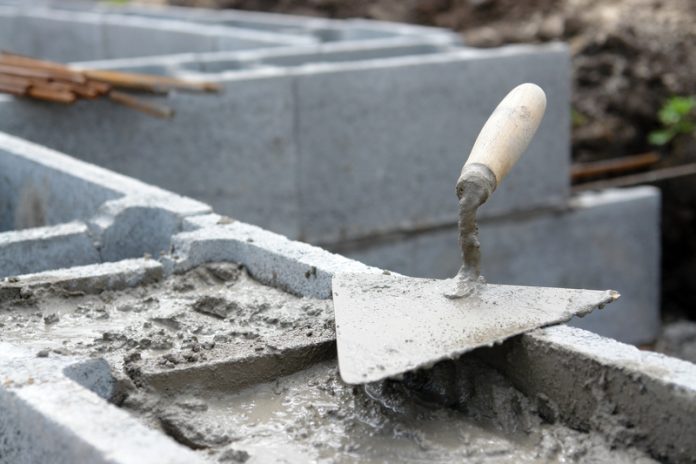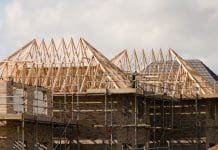Guy Thompson of The Concrete Centre outlines the response by the Modern Masonry Alliance to the Housing White Paper, “Fixing our broken housing market”
Masonry solutions in new housing already contribute over 80% of the housing market (as evidenced by National House Building Council (NHBC) statistics). Output has been increased in recent years to meet the hike in demand, and new capacity is already in place to maintain and increase it to help meet the government’s aspiration of a million new homes by 2020.
The DCLG’s Housing White Paper, ‘Fixing our broken housing market’, was published in February. The MMA supports the broad analysis and recognition of past problems limiting growth in housing numbers stated.
However, the White Paper incorrectly attributes the delay to shortcomings in traditional construction and is misinformed as to the contribution offsite construction methods can make regarding numbers, long-term quality and immediate delivery.
Nearly all of the factors behind the shortage of new homes are outside the control or influence of product manufacturers. This is evidenced by the consultation which includes access to finance and land, a range of planning issues and the fact that, up until now, delivery has been concentrated within private sector housing for purchase.
The MMA is keen to highlight a range of benefits that masonry solutions can provide, and draws attention to some of the arguments surrounding the increase in housing production.
Invest in proven products with a proven track record and a long life
The Homes and Communities Agency (HCA) has been reported as stating that public money will be used to fund land and factory construction for offsite and modern methods of construction, in line with the tenor of the White Paper analysis and proposals. This, however, leads to a real concern that government policy is now incentivising certain construction methods and materials at the taxpayers’ expense, which could lead to an increase in imported materials to the detriment of UK GDP.
The current proposals to favour offsite and modern methods of construction, fail to recognise the long-term benefits of masonry and potentially give rise to the risk of focusing on speed at the expense of long-term quality, durability, long-life and whole-life carbon reduction.
Invest in a UK supply chain and increase production to deliver more homes
The recent expansion in housing numbers has been supported by the increase of blockwork manufacturing output, which is already in hand through investment in new production lines and additional working shifts as well as further measures to improve and increase skilled trades/training. This will be aided further by proposed measures to encourage small and medium-sized contractors back into house building where the size of projects undertaken is most likely to favour flexible off-the-shelf masonry solutions.
Masonry: local, low carbon and long-lasting
Masonry is a locally and responsibly produced, long-life, low carbon, lowest cost option and requires little or no imports. Local jobs and industries already exist and need support: why resort to, and encourage further use of imported materials? Housing built with masonry and concrete construction has inherent whole-life benefits of fire resistance, acoustic separation and climate change resilience that outlast short-term, lightweight, imported systems.
Masonry is also a very durable material, and when it eventually reaches the end of life, it is 100% recyclable.
Concrete blocks gradually absorb carbon dioxide through a natural process called carbonation. This process reduces the embodied carbon of concrete blocks by around a third over the lifecycle of the material1.
Masonry homes are energy efficient
A study by Arup2, shows that any additional embodied carbon included in a traditional masonry built house can be offset by the energy savings from thermal mass from between 11 and 21 years. This depends on the density of the blockwork, and from that time on can have a lower whole-life carbon footprint than equivalent timber frame housing. The thermal mass of concrete and masonry also provides some additional protection from overheating and ultimately delays any future requirement for energy-intensive air-conditioning.
Masonry: resource efficient
One aspect of resource efficiency is longevity – doubling longevity is as effective as halving resource use. As can be seen from our existing housing stock, masonry and concrete give long-term durability and robustness and can last for hundreds of years if maintained. This long service life of our housing must not be compromised if we are to provide a long-term solution to housing an increasing population.
Masonry homes: resilient to climate change
Climate change resilience is a matter of ensuring that homes, buildings and infrastructure are resilient to the impacts of a changing climate.
Thus, resistance to overheating3, flooding, storm, high winds and extreme weather events is critical when investing in our housing of the future. Once again, the inherent characteristics of heavyweight solutions, such as concrete and masonry housing, can meet all these requirements.
Masonry does not burn and has superior fire resistance
Choosing masonry protects property against fire damage.
Since the Great Fire of London, masonry solutions have been recommended to address the risk of fire spread both within buildings, between buildings and to reduce the combustible structural content in our urban environment.
Fire safety for occupants of dwellings is included in Building Regulations.
However, the safety of firefighters, (knowledge of building combustible content and quantum of combustible material) has not been addressed elsewhere. Neither have the needs of fire protection to protect property structure and its ability to be quickly or cost effectively reinstated after a fire (a key insurance issue) nor the potential risks evident during construction and pre-completion, which have been highlighted by a series of unfortunate incidents where combustible materials have been used as a structure.
Government statistics show that the impacts of fire are greater in buildings of combustible construction4.
While recognising that fires occur in all building types and forms of construction, a recent document endorsed by LABC, FPA, ASFB and RISC advise; “Masonry buildings are by their nature and materials resistant to fire. The designer or specifier should remember that this fundamental quality leads to simpler detailing and construction and this simplicity, in turn, benefits the thermal and acoustic detailing as well as the construction. Masonry is an excellent material for a ‘fabric first’ approach”.
Time, cost and flexibility
Masonry materials can be bought in bulk or off-the-shelf from a builder’s merchant. They lend themselves to swift programme changes and are flexible for a range of solutions. Their lead-in time is relatively short, thus able to match the overall order-to-completion times of offsite solutions. This procurement path, linked with available skills and the lowest cost, lend themselves to the current private housebuilders’ programmes.
Much of our future housing will be on brownfield sites, infill and small additions to our existing cities, towns and villages, each with their own vernacular and local requirements. The flexibility and versatility of concrete and masonry solutions can easily meet the demands of localism.
Innovation
The masonry industry is already investing in major developments in Building Information Modelling (BIM), Environmental Product Declaration (EPD) and novel cements, but these and future innovations need time to develop and market confidence to encourage investment. Existing products can also be part of innovative design solutions, such as achieving Passivhaus performance standards or being part of floating houses in flood-prone areas.
Home buyers’ confidence for healthy and energy efficient homes
BRE’s Home Quality Mark scheme focuses on the interests and drivers of homeowners and aims to differentiate on quality in areas such as flood resilience, safety and security, air quality, noise, cost, energy reduction, renewable energy, overheating risk/controlled ventilation, responsible ethical materials selection, low environmental impacts, life cycle costs, durability and resilience, combustibility, water efficiency, space efficient functional and adaptable design. As with BREEAM rated buildings, the benefits of masonry and concrete will enable designers to use these materials to meet the highest standards.
1 Whole-Life Carbon and Buildings, MPA The Concrete Centre, 2016
2 Embodied and Operational Carbon Dioxide Emissions from Housing: A Case Study on the Effects of Thermal Mass and Climate Change, J. Hacker (Arup) et al, Energy and Buildings 40 (2008), pp375-384
3 MORGAN, Chris, et al. “Overheating in Scotland: Lessons from 26 monitored low energy homes.”Proceedings of International Conference CISBAT 2015 Future Buildings and Districts Sustainability from Nano to Urban Scale. No. EPFL-CONF-213311. LESO-PB, EPFL, 2015
4 Analysis of fires in buildings of timber framed construction, England, 2009-10 to 2011-12; Department for Communities and Local Government; December 2012
Guy C W Thompson BA BARCH RIBA
Head of Architecture, Housing and Sustainability
The Concrete Centre
GThompson@concretecentre.com















I don’t doubt, for a moment, the thermal mass benefits of concrete construction; with one major proviso. For the concrete to do its job, it has to be in contact with the room air. Aerated concrete insulation blocks don’t help as their thermal mass is rather less than dense concrete. However, it is the use of dry lining, either on battens or dot and dab which poses the problem. It effectively decouples the beneficial thermal mass of the concrete away from the room air. Hence, you end up with a building which is structurally heavyweight but thermally lightweight. Returning to a wet plaster finish is extremely unlikely so we are left with a problem whereby many of our “heavyweight” buildings are overheating and this will only increase as time goes by.